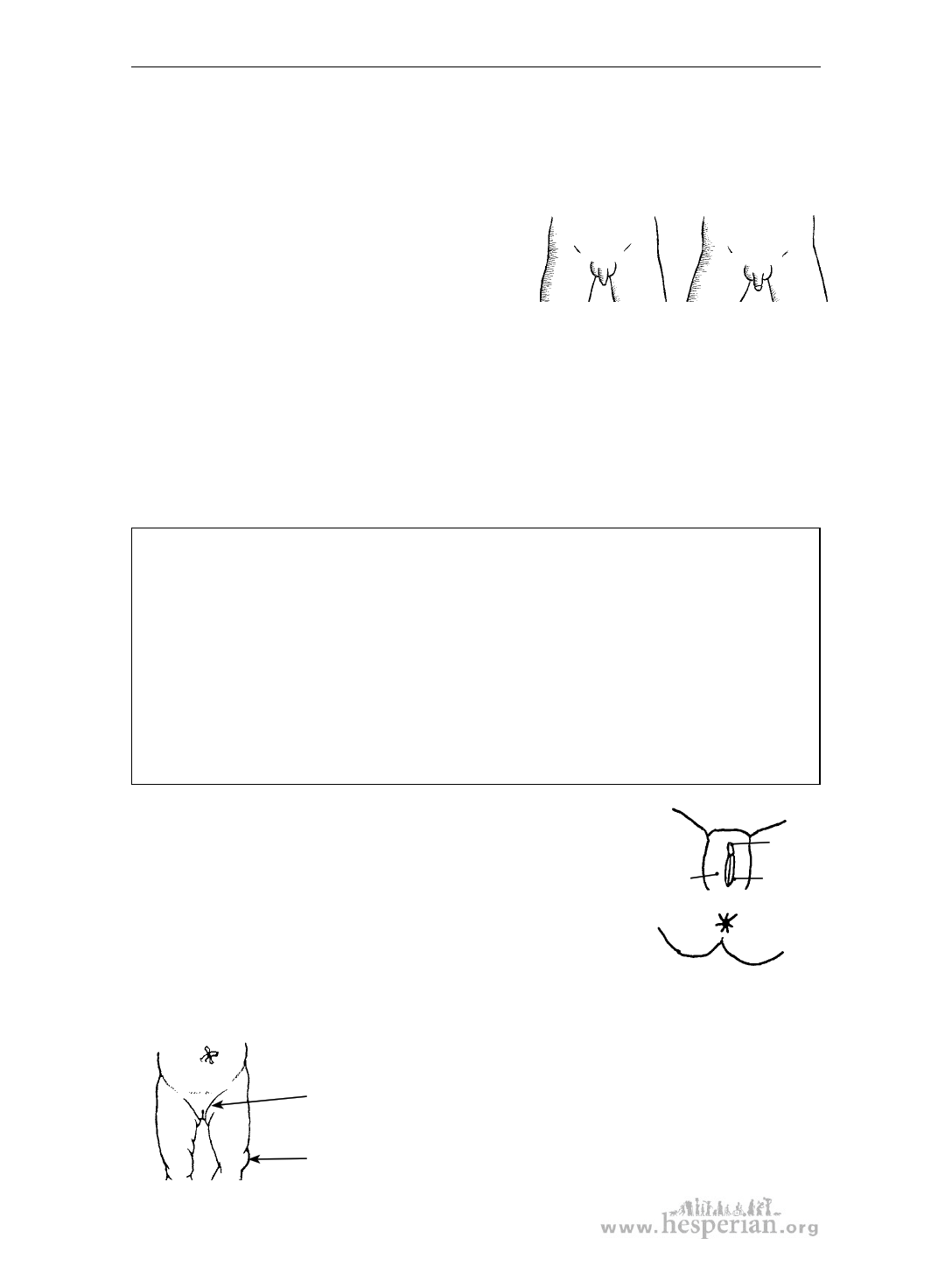
Chapter 14: The first few hours after the birth
Male circumcision
Circumcision is an operation to remove the skin around the tip of the penis
(foreskin). Sometimes the baby boy is circumcised right after birth, or a few
months after birth. Sometimes he is not circumcised until he becomes a young
man. Some boys are not circumcised at all.
Circumcision is important in many
cultures and religions. It is not medically
necessary but it may provide some protection
for a man against sexually transmitted
infections, including HIV. For a baby, it can uncircumcised
circumcised
help prevent infections of the bladder and
penis
penis
kidneys. The risks of circumcision are infection, bleeding, injury or less sensitivity
of the penis, and pain and trauma to the baby. Only a skilled person with sterile
tools should circumcise a baby.
Parents of uncircumcised babies should clean their baby’s penis as they do the
rest of the baby’s body. They should not pull back the foreskin to clean under it
until it pulls back easily, usually after a few years.
Some boys are born with their testicles high in their bodies — not in the sac.
This can be normal. But it is much more common in boys whose mothers
were exposed to toxic chemicals.
If many baby boys in your community have testicles that did not drop
down, there may be toxic chemicals in the air, water, or soil that are causing
problems for the whole community. And the whole community should work
together to protect themselves from these chemicals.
Boys with this problem should be evaluated in a hospital when they are
older, not as infants, for surgery that may help prevent cancer of the testicles.
For a girl
Make sure that the girl has both outer and inner “lips” of
her genitals. She should also have a small opening to her
vagina. If she does not have an opening, she may need an
operation. She should get medical help right away. Tell the
parents that it is common for girls to have a small amount
of blood from the vagina for 1 to 2 days after birth.
outer
lips
clitoris
inner
lips
Hips and legs
First, look at the baby’s hips. Compare the two legs. If one hip
is dislocated, that side may show these signs:
• the upper leg partly covers part of the body
• there are not as many skin folds
• the leg may seem shorter, or turned at an angle
264
A Book for Midwives (2010)